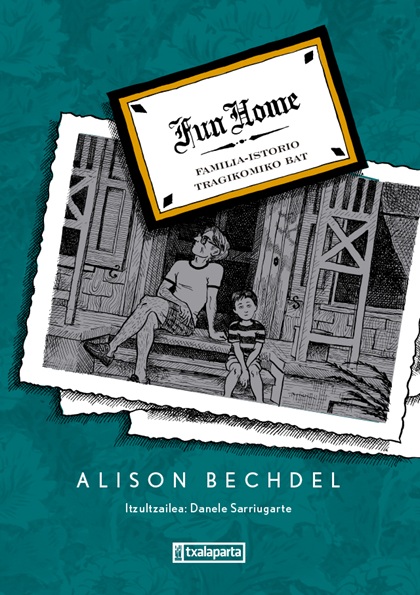

Fun Home. A tragic family
history Alison Bechdel
Txalaparta, 2024
---------------------------------------------
Fun Home. Alison Bechdel is known for the first publication of the graphic novel A Tragic Family Story (2006), although he himself participated in several publications in the comic book Dykes to watch out for strip in the 1990s. A curiosity: in one of these strips appeared for the first time the Bechdel Test, which today is so popular to us. On this occasion, therefore, we will approach the comic book Fun Home that Danele Sarriugarte brought to the Basque Country with Txalaparta in 2024.
We, as comics creators, are watched by Bechdel's graphic style. In the book he uses square vignettes arranged perpendicularly without variations, shaded only by a cold blue. This drawing style tells us about their relationship with the family. Precisely, the cold and closed tones immerse us in the mortuary house where you lived as a child.
Bechdel uses literature as a company, a mirror and a key. And that is that he reports his memories in connection with passages and book characters that have been fellow travellers at every moment of his life. This autobiographical account highlights the violence and fragility – “that old disaster” – that underpins the image of the perfect heteronormative American family. To the counterweight, Bechdel draws a map of reference writers and books opposed to this family model, something unusual in graphic novels.
It is surprising that this classic has reached us in the Basque Country eighteen years after its publication. The expectation reflects that translation is not just translating a text from one language to another. It is a political decision. In selecting which text is translated, it is decided what a people will read. In the library, we act in a similar way. A library can also influence reading. That is why, in our environment, we are building the collection from the perspective of popular movements.